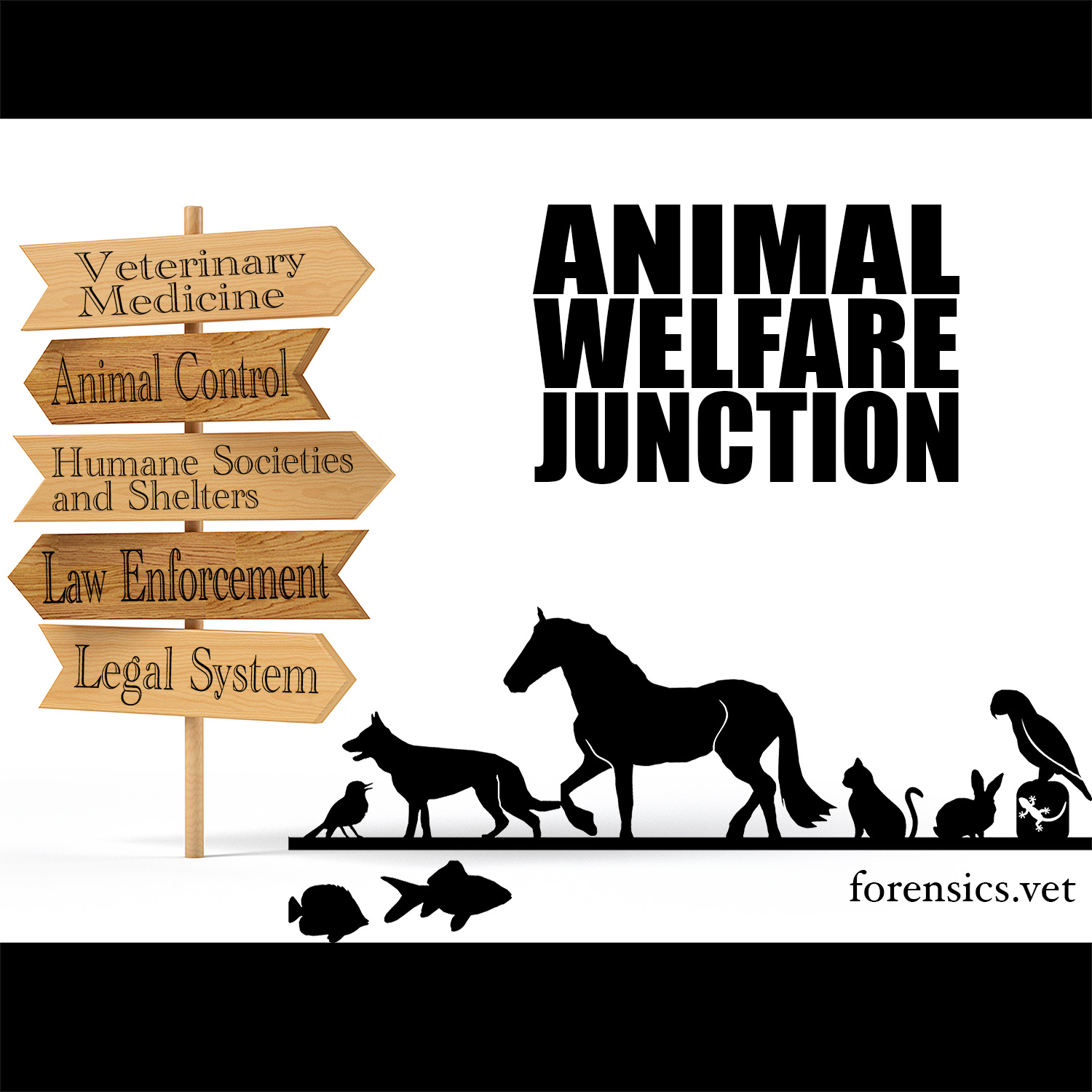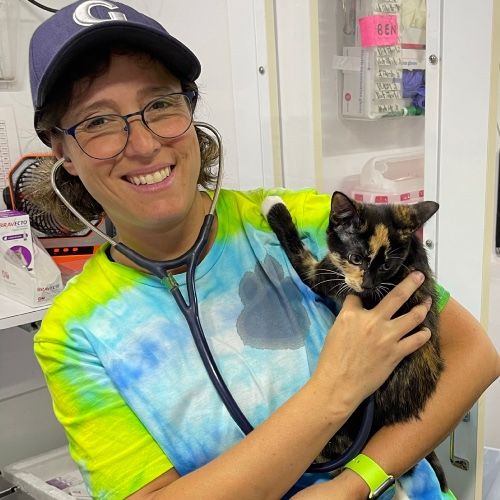UF Animal Forensics Conference 2024: Photogrammetry in Criminal Investigations with Eileen Roy-Zokan
We are in person at the 2024 Animal Forensic Conference in Gainesville, Florida! Dr. G will be interviewing several of the speakers to give our audience a bit of the knowledge gained through the presentations. We will be releasing each interview individually to allow our listeners to find topics of interest.
What is photogrammetry and how can it help in animal crime investigations? Eileen Roy-Zokan discusses the use of known objects in images to estimate the size of other objects, how this is done now, and where is this technology headed.
We would also like to invite our listeners involved in animal cruelty investigations to visit and join the International Society for Animal Forensic Sciences https://isafs.org/
Mentioned in this episode:
Keep it Humane Podcast Network
The Animal Welfare Junction is part of the Keep It Humane Podcast Network. Visit keepithumane.com/podcastnetwork to find us and our amazing animal welfare podcast partners.
Transcript
Our next guest is Eileen Roy-Zokan.
2
:Thank you for being here
and welcome to The Junction.
3
:It's my pleasure.
4
:Eileen Roy-Zokan: Thanks for having me on.
5
:DrG: Can you tell us about your
background and how it relates to
6
:the field of veterinary forensics?
7
:Eileen Roy-Zokan: So I have a doctorate in
genetics and I've been working in genetics
8
:for 20 years, so I mostly do DNA analyses.
9
:Most of my cases deal with wildlife
versus domestic animals, so I'm usually
10
:working on poaching cases and um,
species identification, things like that.
11
:DrG: I just actually, uh,
finished a class on international
12
:wildlife trafficking and, and law.
13
:Oh, very cool.
14
:Yeah.
15
:So, I was, I was, I was learning so
much about the different laws and,
16
:And also, like, the things that
people are doing, because it's so
17
:much complex that I even thought.
18
:Eileen Roy-Zokan: Right?
19
:Oh, so much.
20
:The networks are, are crazy when it
comes to trafficking of wildlife.
21
:DrG: Yeah, and the excuses they
use and the type of species that
22
:they take and the reasons for it.
23
:So, I mean, it is just so complex.
24
:Eileen Roy-Zokan: It really is.
25
:DrG: So, what was your topic today?
26
:Eileen Roy-Zokan: My topic was
something really outside of my field.
27
:It was on photogrammetry.
28
:So, um, photogrammetry is the
science of getting information
29
:about an object or the environment
that's featured in photographs.
30
:And so my talk was kind
of focused around that.
31
:DrG: So I love taking pictures
and I love manipulating pictures
32
:and using things like Photoshop.
33
:And I was really excited to see
that it's something kind of similar.
34
:So how does, how does photogrammetry work?
35
:Eileen Roy-Zokan: Traditionally, in
a normal setting, in a normal crime
36
:scene, um, you're going to be using,
you're going to be taking a bunch
37
:of overlaying pictures of your crime
scene, and you can upload it on special
38
:photogrammetry software, where then it
will recreate, do a three dimensional
39
:reconstruction of your crime scene.
40
:Um, They also use this a lot in
archeological digs to kind of map
41
:out their dig area and also ancient
artifacts that kind of have a
42
:digital copy of that artifact that
can be safely examined afterwards.
43
:In my case, I can't do that because
the photographs I'm using are, are.
44
:Stuff like, um, social media posts
and, um, game camera pictures.
45
:And with these photogrammetry software,
you need, the camera that you're using
46
:needs to be known by the program, meaning
you've taken it through a series of
47
:calibration tests, that the program
then is able to, any of the pictures
48
:that you take with that camera, is
able to extrapolate the depth of field.
49
:from each of those photographs
based on the calibration tests.
50
:And then that's how it's able to
get that geometric information
51
:from your photographs to build
that three dimensional model.
52
:When you don't know the camera, like
you're taking a picture off of Facebook,
53
:that's not possible, so I can't use those
traditional softwares to do my analyses.
54
:DrG: And I imagine also the
fact that you're dealing usually
55
:with probably like a single shot
versus multiple shots, that's
56
:Eileen Roy-Zokan: Absolutely.
57
:That is absolutely the case.
58
:Um, I'm usually dealing with just one or
two pictures, um, that I have to compare.
59
:And there's basically three
different analyses I do.
60
:One is individual identification.
61
:I'll get a couple pictures and they're
like, is this deer in this social
62
:media post the same deer that's
in, on this game camera picture?
63
:Or I'll get two photographs of like, I had
a photograph of a, of a deer mount that
64
:was taken in a residence about, you know,
two decades ago versus a deer mount, a
65
:picture of a deer mount that was taken.
66
:And another individual's residence
two years ago, it was some
67
:arguments between neighbors, one
stole something from the other.
68
:And it's just, is that
the same deer Mount?
69
:The other thing I'll have is comparing
social media posts or game camera
70
:pictures to a physical object.
71
:We have an officer seize,
you know, an antler rack.
72
:And they have some game camera pictures.
73
:Is that, did that rack come from
that deer that they have on the game
74
:camera or the social media posts?
75
:DrG: One of the examples that you
posted was as far as like doing,
76
:taking measurements of a deer antler.
77
:And that was, if I understand
it correctly, to see if it was
78
:like poached the correct time
or, or taken at the correct time.
79
:Eileen Roy-Zokan: Yeah.
80
:So here in the state of Florida,
we have a regulation that, uh,
81
:male deer cannot be taken if their
antlers are less than five inches.
82
:So there was a social media post of an
immature buck that the person that posted
83
:the social media post, um, they actually
strapped on an eight point rack on On
84
:the, on the immature buck using a towel to
make it look bigger than it actually was.
85
:Um, and our officer seized the
rack and they had two questions.
86
:Whether the rack they seized
was actually the antler rack
87
:that's featured in the picture.
88
:And then in the picture you
could also see the actual antler
89
:point of the immature buck.
90
:Could I somehow get an estimate of the
size and length of that antler point?
91
:And because, um, What I have to use is
either a program like Photoshop or another
92
:free version of Photoshop known as GIMP.
93
:to try and get the number of
pixels along these objects.
94
:I so you need an object of known
size in the same plane as the object
95
:you're interested in measuring.
96
:And so in this picture, I saw that one
of the antler points on the rack that was
97
:used as a toupee was right next to that.
98
:actual antler point of the immature buck.
99
:And so I used the rack that I had
in the lab, um, that was seized.
100
:That was the actual rack
in the used as a toupee.
101
:Um, I measured that out as about 2.
102
:6 inches.
103
:And then I was able to then look
at the, I got the number of pixels.
104
:Um, so I measured out, the length on GIMP
and got the number of pixels that was
105
:contained along that particular antler
point on the toupee rack and then I got
106
:the number of pixels of the actual antler
point on the immature buck and then
107
:from there what I do is I know the size
of the antler point from the physical
108
:rack I have in the lab it was about 2.
109
:6 inches.
110
:And so what I'm able to do is say, okay,
this number of pixels for that particular
111
:antler point divided by its actual size
is this number of pixels per inches.
112
:So how can you use that as a
conversion factor, because you know
113
:your number of pixels per inch.
114
:And then from there, I was able to measure
the number of pixels along the antler
115
:point on the immature buck, divide that by
the conversion factor, that's your number
116
:of pixels per inch, and that will convert
that to, will give you the size estimate
117
:for the object you're interested in.
118
:Now this hasn't been court validated.
119
:We are testing it in the lab to get
the statistics and variations behind
120
:these kinds of estimates, but that's
kind of the approach that I use.
121
:DrG: So this is a relatively
early field, right?
122
:So there's still a lot.
123
:So where do you see this going
as we move forward in forensics?
124
:Eileen Roy-Zokan: Oh boy.
125
:It would be really great if we can
kind of automize this a little bit.
126
:Um, we also need to test
out different programs.
127
:I know there was a dissertation recently
that was published back in:
128
:they, Did these kind of analyses, but
they use the Pharaoh scanner as well
129
:and Photoshop and Gimp and compared all
three methods and although their sample
130
:sizes were low, it's very promising.
131
:So there's so much technology development
that can happen, but if they could get
132
:that more automized and the statistical
variations down, so it's going to take a
133
:lot of testing of different environmental
factors, different angles and things
134
:like that to get that more up to date.
135
:DrG: Right, well I'm looking forward
to seeing where this takes us because I
136
:think that there's a lot of information
with how many people take pictures
137
:of everything and so many sources.
138
:I think that this is going to be really
useful and relevant in crime scene
139
:investigations, especially with animal
crime scenes and as you mentioned with
140
:like wildlife, uh, illegal wildlife trade.
141
:Absolutely.
142
:Yeah.
143
:Yeah.
144
:So, thank you so much for being here
and thank you for talking to us and
145
:thank you for what you're doing.
146
:Eileen Roy-Zokan: It was
147
:my pleasure.

